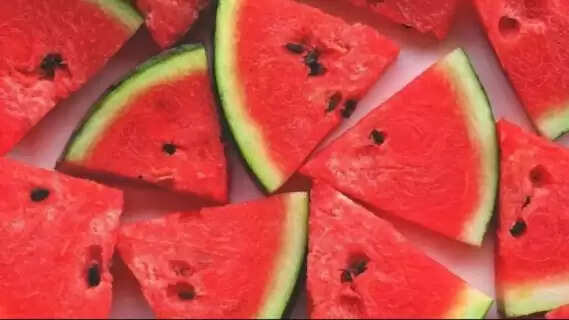
Beware of Injected Watermelons: Watermelon is a popular summer fruit, loved for its juicy sweetness and natural red color. However, in recent years, many watermelons in the market have been found adulterated with harmful chemicals like erythrosine—a synthetic red dye used to artificially enhance the fruit’s bright red appearance and prolong shelf life. This chemical adulteration poses serious health risks and compromises the natural quality of watermelons.What Is Erythrosine and Why Is It Used?Erythrosine (sometimes called Red-B or E127) is a toxic food coloring agent that is banned or restricted in several countries due to its potential health dangers. Sellers inject this chemical into watermelons to make them look more appealing, fresher, and sweeter to consumers. Unfortunately, erythrosine is harmful to the human body and can cause adverse effects such as:Disruption of thyroid functionBehavioral changes in childrenAllergic reactions (skin irritation, rashes)Potential carcinogenic effects (cancer risk)Long-term consumption can also affect reproductive health and cause other serious complications.How to Identify Injected or Adulterated WatermelonsIt may not always be easy to spot an injected watermelon just by looking, but there are several telltale signs and simple home checks you can do:Cotton Ball Test: Cut the watermelon in half and gently dab a clean cotton ball or tissue on the red pulp. If the cotton ball turns bright red or pink, it indicates the presence of erythrosine or other chemical dyes. Natural watermelon pulp will not stain the cotton.Look for Injection Marks or Holes: Check the surface near the stem for small puncture marks or cracks which could be from injection of chemicals.Color Uniformity: Natural watermelons usually have slight variations in red color throughout the flesh. An unnaturally uniform bright red color can indicate chemical coloring.Touch and Firmness: Injected watermelons can feel unnaturally firm or hard in spots due to chemical treatment.Check the Tail: A dry, dark brown or black tail means the watermelon naturally ripened on the vine. A green or fresh-looking tail may indicate premature harvesting with forced ripening.Look for the Yellow Spot: A pale yellow patch on the outer rind, where the watermelon rested on the ground, usually indicates natural ripening.Taste and Smell: Artificially colored watermelons may have an overly sweet or artificial taste and lack the fresh aroma of organic watermelons.Health Risks and Why You Should Avoid Injected WatermelonsAside from compromising taste and quality, chemicals like erythrosine and carbide (used to ripen fruits artificially) can be dangerous if consumed regularly. They may cause nausea, vomiting, diarrhea, skin allergies, neurological issues, thyroid problems, and possibly increase cancer risk. Children, pregnant women, and people with weakened immune systems should be especially cautious.How to Stay Safe When Buying WatermelonsBuy watermelons from trusted vendors or organic markets when possible.Perform the cotton ball test before serving to children.Wash and peel fruits where possible to reduce chemical residues.Avoid watermelons with unnatural bright red colors or suspicious appearance.Stay vigilant for small holes, cracks, or overly firm spots on the watermelon.Prefer seasonal purchases; fruits bought out of season are more likely to be chemically ripened.Protecting your health by choosing natural, unadulterated watermelons is essential especially in summer when the demand for this fruit peaks. Use these simple tests and tips to ensure the watermelons you consume are safe, fresh, and free from harmful chemical adulterants.
Around the web

